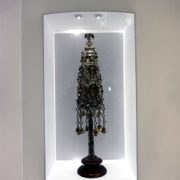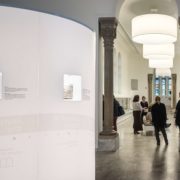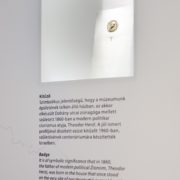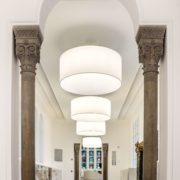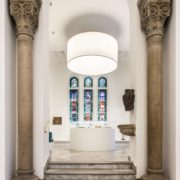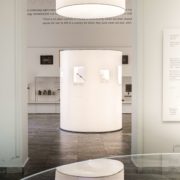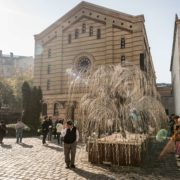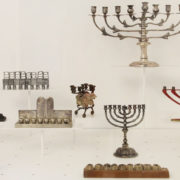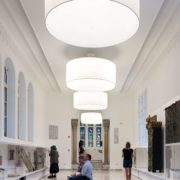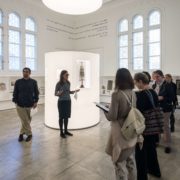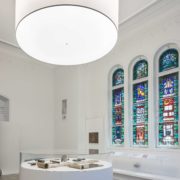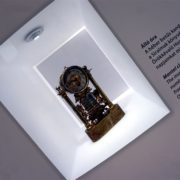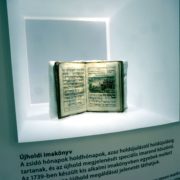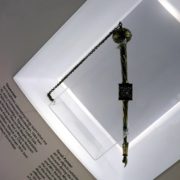Hungarian Jewish Museum and Archives – Budapest
HOSEN – custom-designed luminaires
Curator of the exhibition: Zsuzsanna Toronyi | Hungarian Jewish Museum and Archives
Lighting design: Ádám Mikuska | LISYS-PROJECT Kft.
Electricity designer: János Petkovics | SOLLENAU Épületvillamossági Mérnöki Iroda Kft.
Technical specifications of custom-designed luminaires:
HOSEN 200 suspended luminaire | dimensions: D2000x800 mm | raw material used: covered with PVC foil, with all-over opal PMMA closing | installed power: 560W | colour temperature: 3000 K | operation: by adjustable “DALI” solution
HOSEN 100 suspended luminaire | dimensions: D1000x400 mm | raw material used: covered with PVC foil, with all-over opal PMMA closing | installed power: 168W | colour temperature: 3000 K | operation: by adjustable “DALI” solution
Technical specifications of TIME AND SPACE CYLINDERS – specific display cases: design and implementation: Ferenc Bánrévi | Dániel Galambosi | Máté Galambosi | Gergely Kiss-Gál | Zsuzsanna Kiss-Gál | Margó Petró | András Szél | atalierarchitects
Graphic design: Gábor Dávid
Concept, texts: Iván Darvas | Gábor Kádár | Zsuzsanna Toronyi
Technical specifications of custom-designed cylinders:
K17 time cylinder with 8 display compartments | dimensions: D1800x2200 mm | material: opal PMMA | installed LED power: 236W | with IP40 protection
K28 space cylinder with 8 display compartments | dimensions: D1800x2200 mm | material: opal PMMA | installed LED power: 236W | with IP40 protection
Description of the project
The permanent exhibition of the Hungarian Jewish Museum and Archives was reborn |
“Here, it is possible to read time and space together because they come together; symbolizing perpetual circumvolution of Jewish life – in spite of all the destructions, persecutions, auto-da-fés and gas chambers of the past. This is exactly why the title of this exhibition is TAMID [always, repeatedly, recurrently, permanently].”
Like many other ecclesiastical museums, the Jewish Museum is undergoing renewal, too. The earlier permanent exhibition (which was operating for 30 years) was opened by the Chairman of the State Office for Church Affairs (“Állami Egyházügyi Hivatal”) back in 1984. Continuity of this unchanged structure was first interrupted by a periodical centennial exhibition last year (under the title of “100 years – 100 objects”, elaborating the life of Hungarian Jewish society). As the second phase of renewal – thanks to the contribution of significant international funds and private individuals – the new permanent exhibition opened its gates in early September, introducing to visitors general questions of Judaism.
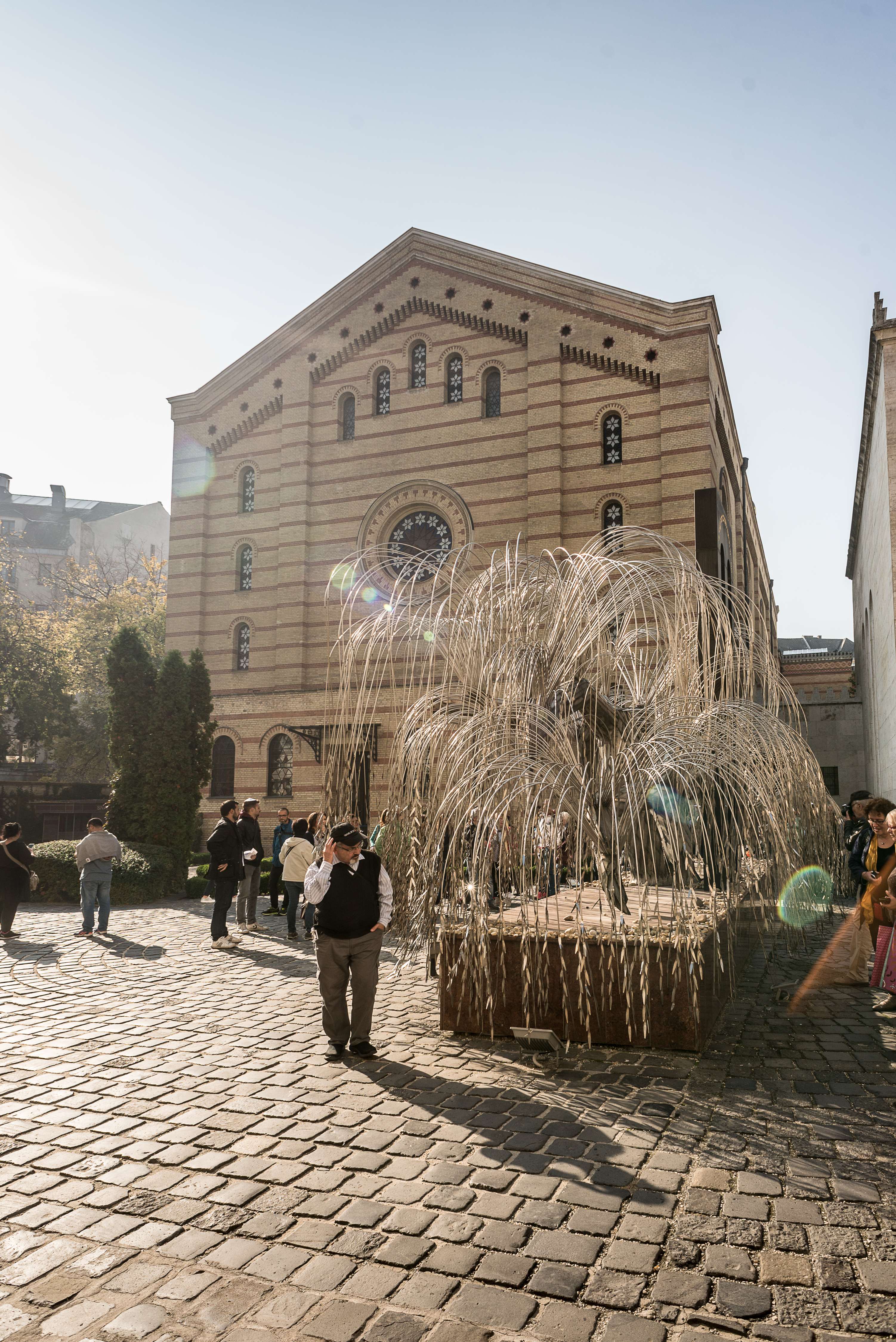
What makes an everyday object a Judaica? Is it allowed to exhibit the Torah in a museum? Why might certain objects on display in the case be dirty? Why do “recycled” menorahs made by hand from silver cutlery, tin pastry cutters, Torah shields or even perforated copper discs appear in the museum? How come the museum exhibit kitsch? Instead of answers, the exhibition offers similar dilemmas and issues to contemplate for its visitors. It was the curator’s concept to present the objects in a manner reflecting the questioning characteristic of Judaism and the tradition of commentaries interpreting the Torah.
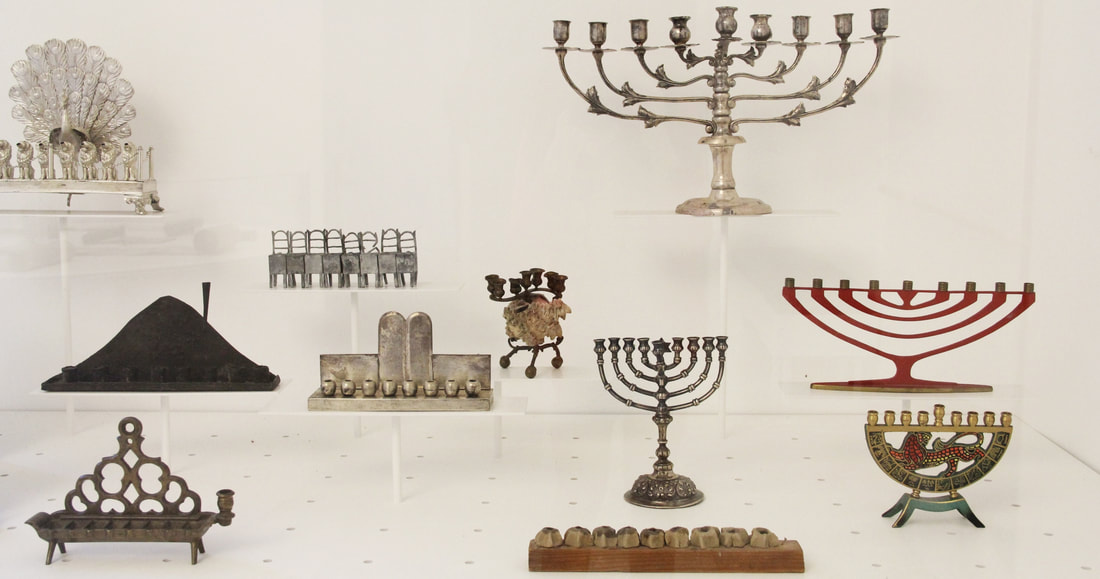
The exhibition is focusing on the concept of Jewish space and time. The two monumental “time and space cylinders” in the front and at the back of the exposition demonstrate the world of the Jewish calendar (i.e. the time) and culture of the diaspore (i.e. the space) through almost identical types of objects. In the meantime, the concept of the exposition is also integral to the building of the museum itself. For example, the glass windows designed by Károly Majoros are placed in context, and Hanukkah menorahs are displayed in the window, in accordance with their original, ritual function. Memory of Holocaust also appears in relation with the building, as in the last exhibition room, we have the opportunity to look down at the garden of the Synagogue, where the two thousand two hundred eighty bodies found after the liberation of the ghetto were buried, by standing on a step of symbolic significance. Popular items from the old exhibition are also displayed in the renewed space, reflecting the structure of the feasts, as well as the emblematic world of blue colours. In the exposition of the Jewish Museum, two worlds meet: the heritage of Talmudic text commentaries and the “multimedia” experience of the visit. This way, the visitor can observe the exhibited objects, read about them in the explanatory notes and interpret the surrounding place at the same time. This complex experience is available on Android and iPhone devices through a downloadable, interactive “milev” guide application, which will help visitors navigate in the labyrinthine field around exhibited objects. The sustainable design – a LEGO-like, mobile structure – of the exhibition also reflects a change of approach, making it possible for us to continuously address the questions of the present with newly added objects. This is how a Megillah (Book of Esther) read on Purim and a document written in the same format but about the Horthy-era can be next to each other.
The management believes that the museum is not a mausoleum, conserving a dead culture, but rather a living organism: a place for permanent interpretation and questioning.
Curator of the exhibition: Zsuzsanna Toronyi, Director of the Hungarian Jewish Museum and Archives.
